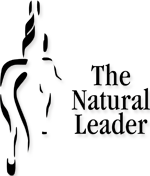 How well can you or your employees articulate the operating principals, vision or values of your organization? Like most companies I have put a lot of effort into creating these statements for The Natural Leader and realised I had missed communicating a basic operating principal to my own team when the question was asked “Wouldn’t it be easier to use disposable dishes for the meals at the sessions?”
How well can you or your employees articulate the operating principals, vision or values of your organization? Like most companies I have put a lot of effort into creating these statements for The Natural Leader and realised I had missed communicating a basic operating principal to my own team when the question was asked “Wouldn’t it be easier to use disposable dishes for the meals at the sessions?”
Having recently completed a comprehensive manual for my Wranglers with a Difference, those who assist in The Natural Leader programs I had neglected to express the core value of Environmental Responsibility.
I can’t help but see the irony of the oversight. Values are a basic leadership concept we explore through our programs. A horse lives by the most basic of values, their lives, every action or reaction a horse makes is based on that value. What we value is the foundation of our leadership philosophy and style and will be reflected in what we do and how others see us.
As organisations we put together our websites, press releases and visions statements assuming everyone who works with us will know and live by what we have produced. The problem is not everyone is involved with creating that material so how do you get their buy-in?
Repetition is the foundation of teaching a new activity or behaviour to a horse. Repetition reinforces an idea and solidifies the learning and if leadership is about walking the talk, some messages are simply worth repeating.
An oversight easily fixed has introduced a whole new way of thinking about how I engage my Wranglers with a Difference. As the face of The Natural Leader their understanding of why we do things certain ways is important to the messages they convey to those who participate in our sessions.
The Natural Leader vision, values and operating principals continue to be a work in progress. I will repeat and reinforce the ideas and core values I would like The Natural Leader to be recognised by through engaging the individuals who help make us successful.
———————————————-
How life will throw you a curve when you least expect it! Here I am writing about the value of life and sadly my nephew decided his wasn’t worth saving. Colin struggled with depression for a couple of years and was unable to accept the love and help of those he mattered most to. While we differ from animals with our ability to reason and rationalize, there are some questions we simply cannot answer. Colin has found the peace he was seeking, now the search begins for those he left behind.





